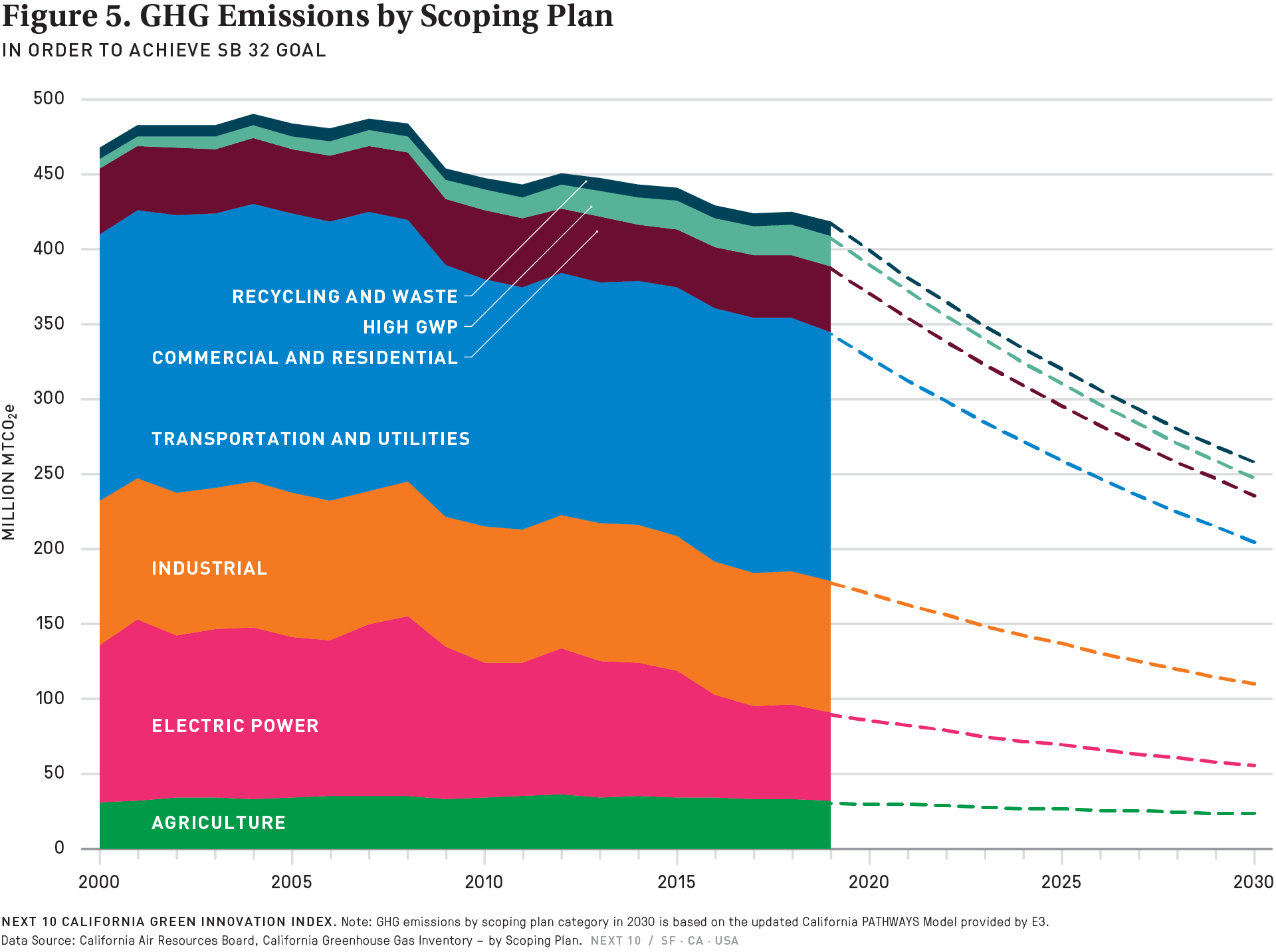Challenge
- Based on the trajectory of the ten years from 2009 to 2019, only recycling and waste and electric power might be on track to meeting the 2030 GHG emission reduction goals. For recycling and waste, the GHG emissions are low but gradually increasing. For electric power, as mentioned earlier and discussed in greater details in the Renewables chapter, ongoing wildfires and droughts threaten the electricity grid’s reliability, and the state will likely need significantly greater efforts moving forward just to keep up the pace of GHG emission reductions in the electric power sector.
- None of the other sectors are on track to meeting the SB 32 goal. Particularly, emissions from high global warming potential—which mainly consist of use of substitutes for ODS for refrigeration and air—have been trending in the wrong direction for at least two decades.6 In particular, GHG emissions from High GWP have increased by 83.8 percent from 2000 (6.3 MMTCO2e) to 2019 (11.5 MMTCO2e).
6 Other scoping plan categories in the high global warming potential scoping plan sector include conditioning activities, semiconductor manufacturing and sulfur hexafluoride (SF6) released from electricity transmission and distribution. Use of substitutes for ODS is by far the largest GHG emitting high GWP category.
More About the
Carbon Economy
Related Content
